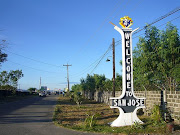Monday, August 6, 2012
Prime Time
The Philippines’ Response to Indigenous Peoples’ and Muslim Education or PRIME was launched in Culasisi Minority School in Brgy. Batongbuhay in Sablayan, Occidental Mindoro last July 27, 2012. PRIME is an educational development initiative of the Department of Education (DepED) which strives to improve equitable access to and quality education for girls and boys in disadvantaged Indigenous Peoples (IP) and Muslim communities. The Australian Agency for International Development (AusAID) funded the program and the grant assistance is directed in two key thrusts: Assist in stimulating community-led demand for quality education services and strengthen the capacity of the community, DepED and other stakeholders to respond in providing relevant, sustainable and quality learning opportunities.
Ms. Evelyn C. Barrientos, Principal II of Yapang Elementary School, through her project proposal paved the way for PRIME’s birth in the municipality. Her proposal is called “The School of Living Tradition-Preserving Cultural Heritage: Integrating Alangan Cultural Practices In Culasisi Minority School”. Said school for the Alangan Mangyans is under Sablayan South District of DepED under Ms. Fe Dimzon as its District Superintendent. Also present during the inauguration is Ms. Elizabeth Delas Alas, one of the members of the Division PRIME Team for Occidental Mindoro. Ms. Eden Cenon and Reynaldo Tupaz of National Commission on the Indigenous’ Peoples (NCIP) likewise came for the activity. This humble blogger was not left out and serve as the local government unit’s representative to PRIME. The administration of Mayor Eduardo B. Gadiano is without doubt supportive of the education department’s program for the IPs.
One of the main problems of the teachers in rural areas such as the indigenous cultural communities is absenteeism. In a planning-workshop we held recently attended by Alangan parents and non-IP teachers, we have identified some cultural and customary traditions attributable to this phenomenon. First is the observance of “Pamago” or “Palipigan” where family members gather for a thanksgiving feast. It is a 24 hour affair where they pray and eat together devouring on the first harvest of a cropping season. Since it is done overnight, the pupils skipped school for a day. Aside from this feast for a bounty harvest, another celebration is done to pay tribute to the rivers and it is called “Bansag”. It is done two to five days at the most. It is a kind of annual picnic where all community dwellers stay near the river, do some ritual and native pigs were offered to the gods. Those offering are shared evenly by the community after each ritual. Another is “Tagbuan” where not only the Alangans who gather but this time with the Taobuids, another ethno-linguistic group. They meet in a far-flung designated part of the mountain. There they exchange or barter goods, rattans for root crops, bananas for wild yam, bamboos for betel nuts, among others. Aside from being an economic activity, “Tagbuan” also features friendly competitions among the two sub-tribes. It’s a sort of mini Olympics showcasing IP traditional games where both young and old play together. This is a month-long celebration usually from December to January.
Ms. Barrientos, knowing the importance of such events to the IPs, intends to sit with the Parents and Teachers Association (PTA) on the matter for a win-win solution. The need to balance education and culture is an imperative. Besides, in her proposal it is implied: “through this project, culture is learned and preserved.”
As if they were in broadcasting, the Mangyans are now in prime time…
-----
(Photo: www.trust.org)
Subscribe to:
Post Comments (Atom)







No comments:
Post a Comment